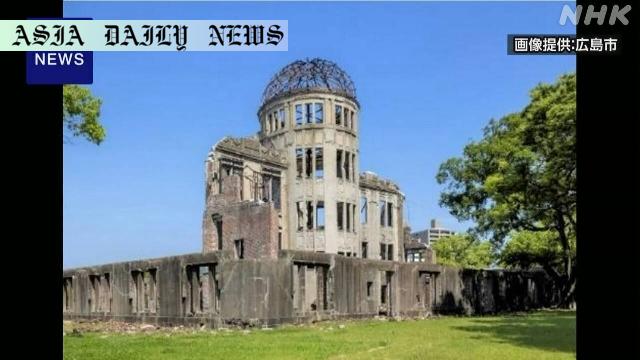Atomic Bomb Dome: A structure with exceptional historic value and a haunting testament to the first atomic bombing.

The Legacy of the Atomic Bomb Dome
The Atomic Bomb Dome, also known as the Genbaku Dome, stands as an enduring symbol of both tragedy and hope in Hiroshima, Japan. Constructed in 1915, the building originally served as the Hiroshima Prefectural Industrial Promotional Hall. However, its historical significance was cemented by the events of August 6, 1945. Positioned just 160 meters from the hypocenter of the first atomic bombing, the structure partially survived the devastating blast, even as the inner parts of the building were obliterated by fire. Its haunting silhouette has since become a powerful reminder of the destructive potential of nuclear weapons and the resilience of humanity in the face of unimaginable adversity.
A New Recognition for an Icon
Recently, the Japanese government has announced its intention to designate the Atomic Bomb Dome as a “Special Historic Site” underlining its exceptional value for preservation. This decision marks a historic milestone as it becomes the first historically recognized site constructed post-Meiji Period (1868-1912) to receive such an honor. Such recognition not only enhances the site’s cultural and historical importance but also underscores its significance as a symbol of peace and a reminder of the consequences of war. Its dual status as both a UNESCO World Heritage Site and now a Special Historic Site cements its role in global discussions on nuclear disarmament and historical preservation.
Preserving Collective Memory
The Cultural Affairs Agency of Japan emphasized that the preservation of the Atomic Bomb Dome in its current form is critical for future generations. As time passes, the Dome serves not merely as a static structure but as a living testament to the horrors of nuclear warfare and humanity’s enduring quest for peace. By maintaining its appearance as it stood immediately following the bombing, the structure retains its authenticity and continues to evoke a profound emotional and intellectual response from visitors. Such recognition further urges the world to reflect on the impact of technological advancements when deployed irresponsibly.
Commentary
The Importance of Recognizing Hiroshima’s Atomic Bomb Dome
The designation of the Atomic Bomb Dome as a Special Historic Site not only honors the significance of the building itself but reflects a broader understanding of how humanity must confront its own history. The structure’s survival acts as a metaphor for resilience, and its recognition emphasizes the importance of preserving physical reminders of events that shaped the global landscape. As a symbol of both destruction and hope, acknowledging the Atomic Bomb Dome invites critical conversations about the profound consequences of warfare and the paths toward lasting peace.
Preservation As A Responsibility for Humanity
This move by the Japanese government underscores the enduring responsibility humanity has in preserving its history. Deeming the Atomic Bomb Dome a Special Historic Site is not simply an act of commemoration; it is a commitment to ensure that the world never forgets the devastating impact of nuclear weapons. By providing a space for reflection, remembrance, and education, this initiative fosters a world that actively remembers its past to build a better future. The lessons imparted by such heritage sites are indispensable in a world that continues to grapple with the consequences of armed conflict.
Encouraging Global Reflection
As an iconic representation of peace advocacy, the Atomic Bomb Dome transcends its immediate context in Hiroshima, holding meaning far beyond Japan’s borders. Its recognition affirms the power of memory and the significance of learning from history. Designating the site as one of exceptional historic value not only benefits Hiroshima but also serves as a reminder to the global community of the shared responsibility in preventing nuclear tragedies. By cherishing and promoting such sites, we ensure that future generations remain aware of the fragility of peace and the strength found in collective resilience.


